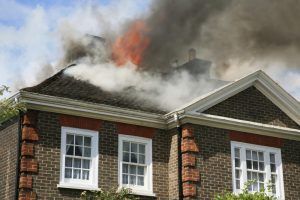Along with holiday joy and the eagerness of a New Year, wintertime can spark some unexpected accidents and disasters. From holiday decorations to heating, there’s a number of factors that could turn a warm, cozy day indoors into an unexpected house fire.
In fact, did you know that house fires are more likely to occur in the winter months?
Keep reading to find out what common culprits can lead to fires and how you can prevent a disaster.
1.) Be aware of heating equipment.
Heating issues is the second leading cause of house fires, death and injuries in the United States. It’s reported that roughly 40 percent of those house fires are caused by space heaters. It’s important to be knowledgeable of your heating system and unplug any space heaters when you leave the house.
2.) Unattended candles can cause unfortunate accidents.
In the cooler months, having candles lit can really set the coziness-feel of a home. But, it’s reported that the month of December sees an increase in house fires sparked by candles. In fact, between 2013-17, an average of 7,900 home fires started by candles were reported in the colder months.
3.) Winter storms often blow in dangerous conditions.
It’s winter, so many people expected hazardous roads, extreme temperatures and inches of snow. But, winter storms also carry in downed trees and powerlines and can bring a risk of fire to your home or property. Stay alert when bad weather is on the way.
4.) Check your electrical systems often.
Home fires caused by electrical issues are the leading cause of fires in the United States. It’s estimated that approximately half of all home electrical fires involve faulty electrical distribution or lighting equipment. Aside from space heaters (as mentioned above), wiring in washer or dryer fans have been a known cause for house fires. Make sure your electrical system is up to date.
The colder months can be a time to rest and recharge; just be sure you’re staying warm safely by checking for any electrical or heating issues, blowing out those candles and tuning into the weather forecast.







